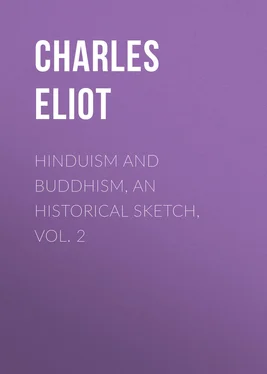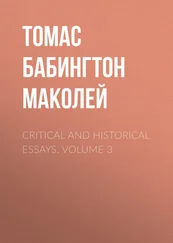Charles Eliot - Hinduism and Buddhism, An Historical Sketch, Vol. 2
Здесь есть возможность читать онлайн «Charles Eliot - Hinduism and Buddhism, An Historical Sketch, Vol. 2» — ознакомительный отрывок электронной книги совершенно бесплатно, а после прочтения отрывка купить полную версию. В некоторых случаях можно слушать аудио, скачать через торрент в формате fb2 и присутствует краткое содержание. Жанр: foreign_religion, Философия, Религиозная литература, foreign_psychology, foreign_antique, foreign_prose, на английском языке. Описание произведения, (предисловие) а так же отзывы посетителей доступны на портале библиотеки ЛибКат.
- Название:Hinduism and Buddhism, An Historical Sketch, Vol. 2
- Автор:
- Жанр:
- Год:неизвестен
- ISBN:нет данных
- Рейтинг книги:4 / 5. Голосов: 1
-
Избранное:Добавить в избранное
- Отзывы:
-
Ваша оценка:
- 80
- 1
- 2
- 3
- 4
- 5
Hinduism and Buddhism, An Historical Sketch, Vol. 2: краткое содержание, описание и аннотация
Предлагаем к чтению аннотацию, описание, краткое содержание или предисловие (зависит от того, что написал сам автор книги «Hinduism and Buddhism, An Historical Sketch, Vol. 2»). Если вы не нашли необходимую информацию о книге — напишите в комментариях, мы постараемся отыскать её.
Hinduism and Buddhism, An Historical Sketch, Vol. 2 — читать онлайн ознакомительный отрывок
Ниже представлен текст книги, разбитый по страницам. Система сохранения места последней прочитанной страницы, позволяет с удобством читать онлайн бесплатно книгу «Hinduism and Buddhism, An Historical Sketch, Vol. 2», без необходимости каждый раз заново искать на чём Вы остановились. Поставьте закладку, и сможете в любой момент перейти на страницу, на которой закончили чтение.
Интервал:
Закладка:
About the time of the Christian era or perhaps rather earlier, greater use began to be made of writing for religious purposes. The old practice of reciting the scriptures was not discontinued but no objection was made to preserving and reading them in written copies. According to tradition, the Pali scriptures were committed to writing in Ceylon during the reign of Vaṭṭagâmaṇi, that is according to the most recent chronology about 20 B.C., and Kanishka caused to be engraved on copper plates the commentaries composed by the council which he summoned. In Aśvaghosha 123 123 Sûtrâlankâra, I. 2.
we find the story of a Brahman who casually taking up a book to pass the time lights on a copy of the Sutra of the Twelve Causes and is converted. But though the Buddhists remained on the whole true to the old view that the important thing was to understand and disseminate the substance of the Master's teaching and not merely to preserve the text as if it were a sacred formula, still we see growing up in Mahayanist works ideas about the sanctity and efficacy of scripture which are foreign to the Pali Canon. Many sutras (for instance the Diamond Cutter) extol themselves as all-sufficient for salvation: the Prajñâ-pâramitâ commences with a salutation addressed not as usual to the Buddha but to the work itself, as if it were a deity, and Hodgson states that the Buddhists of Nepal worship their nine sacred books. Nor was the idea excluded that certain words, especially formulæ or spells called Dhâraṇî, have in themselves a mysterious efficacy and potency. 124 124 See Waddell, "The Dhâraṇî cult" in Ostasiat. Ztsft . 1912, pp. 155 ff.
Some of these are cited and recommended in the Lotus. 125 125 Chap. XXI, which is however a later addition.
In so far as the repetition of sacred words or spells is regarded as an integral part of the religious life, the doctrine has no warrant in the earlier teaching. It obviously becomes more and more prominent in later works. But the idea itself is old, for it is clearly the same that produced a belief in the Brahmanic mantras, particularly the mantras of the Atharva Veda, and early Buddhism did not reject mantras in their proper place. Thus 126 126 Dig. Nik. 32.
the deities present themselves to the Buddha and offer to teach him a formula which will protect his disciples from the attacks of evil spirits. Hsüan Chuang even states that the council which sat at Râjagṛiha after the Buddha's death compiled five Pitakas, one of which consisted of Dhâraṇîs, 127 127 Watters, Yüan Chwang , II. p. 160.
and it may be that the collection of such texts was begun as early as the collection of discourses and rules. But for many centuries there is no evidence that they were in any way confounded with the Dharma.
The Mahayanist scriptures are so voluminous that not even the clergy were expected to master any considerable part of them. 128 128 The Mahâvyutpatti (65) gives a list of 105 sûtras.
Indeed they make no claim to be a connected whole. The theory was rather that there were many vehicles plying on the road to salvation and many guide books. No traveller thought of taking the whole library but only a few volumes which suited him. Most of the Chinese and Japanese sects avowedly base themselves upon three sutras, selected according to the taste of each school from the hundreds quoted in catalogues. Thus the T'ien-t'ai sect has for its scriptures the Lotus, the Nirvâṇa-sûtra and the Prajñâ-pâramitâ, while the Shin-shu sect admits only the three Amidist sutras.
The following are the names of some of the principal Mahayanist scriptures. Comparatively few of them have been published in Europe and some exist only in Chinese or Japanese translations.
1. Prajñâ-pâramitâ or transcendental knowledge 129 129 The word pâram-itâ means as an adjective gone to the further shore or transcendent. As a feminine substantive it means a transcendent virtue or perfection.
is a generic name given to a whole literature consisting of treatises on the doctrine of śûnyatâ, which vary greatly in length. They are classed as sutras, being described as discourses delivered by the Buddha on the Vulture Peak. At least ten are known, besides excerpts which are sometimes described as substantive works. The great collection translated into Chinese by Hsüan Chuang is said to consist of 200,000 verses and to comprise sixteen different sutras. 130 130 See Walleser, Prajñâ-pâramitâ in Quellen der Religionsgeschichte , pp. 15 ff. S.B.E. XLIX. Nanjio, Catalogue Nos. 1-20 and Rajendralala Mitra's Nepalese Buddhist Literature , pp. 177 ff. Versions are mentioned consisting of 125,000 verses, 100,000 verses, 25,000 verses, 10,000 verses and 8,000 verses respectively. (Similarly at the beginning of the Mahâbhârata we are told that the Epic consists of 8,800 verses, of 24,000 and of 100,000.) Of these the last or Ashṭasâhasrikâ has been published in the Bibliotheca Indica and the second or Śatasâhasrikâ is in process of publication. It is in prose, so that the expression "verses" appears not to mean that the works are Gâthâs. A Khotanese version of the Vajracchedikâ is edited in Hoernle's Manuscript Remains by Sten Konow. The Sanskrit text was edited by Max Müller in Anecdota Oxoniensia.
The earliest translation of one of these treatises into Chinese (Nanjio, 5) was made about 170 A.D. and everything indicates that portions of the Prajñâ-pâramitâ are among the earliest Mahayanist works and date from about the first century of our era. Prajñâ not only means knowledge of the absolute truth, that is to say of śûnyatâ or the void, but is regarded as an ontological principle synonymous with Bodhi and Dharma-kâya. Thus Buddhas not only possess this knowledge in the ordinary sense but they are the knowledge manifest in human form, and Prajñâ is often personified as a goddess. All these works lay great stress on the doctrine of śûnyatâ, and the non-existence of the world of experience. The longest recension is said to contain a polemic against the Hinayana.
The Diamond Cutter is one of the best known of these transcendental treatises and the two short works called Heart of the Prajñâ-pâramitâ, which are widely read in Japan, appear to be brief abstracts of the essence of this teaching.
2. The Saddharma-Puṇḍarîka, or Lotus of the Good Law, 131 131 The Sanskrit text has been edited by Kern and Nanjio in Bibliotheca Buddhica ; translated by Burnouf ( Le Lotus de la bonne Loi ), 1852 and by Kern (Saddharma-Puṇḍarîka) in S.B.E. vol. XXI.
is one of the best known Mahayanist sutras and is highly esteemed in China and Japan. It purports to be a discourse delivered by Śâkyamuni on the Vulture Peak to an assemblage of Bodhisattvas. The Lotus clearly affirms the multiplicity of vehicles, or various ways of teaching the law, and also the eternity of the Buddha, but it does not emphasize, although it mentions, the doctrine of śûnyatâ. The work consists of two parts of which the second (chaps. XXI-XXVI) is a later addition. This second part contains spells and many mythological narratives, including one of an ancient Bodhisattva who burnt himself alive in honour of a former Buddha. Portions of the Lotus were translated into Chinese under the Western Tsin Dynasty 265-316 A.D. and it is quoted in the Mahâ-prajñâ-pâramitâ-śâstra ascribed to Nâgârjuna. 132 132 There appears to have been an earlier Chinese version of 255 A.D. but it has been lost. See Nanjio, p. 390. One of the later Chinese versions alludes to the existence of two recensions (Nanjio, No. 139). See B.E.F.E.O. 1911, p. 453. Fragments of a shorter and apparently earlier recension of the Lotus have been discovered in E. Turkestan. See J.R.A.S. 1916, pp. 269-277.
The first part is probably not later than the first century A.D. The Lotus is unfortunately accessible to English readers only in a most unpoetic translation by the late Professor Kern, but it is a great religious poem which starting from humanity regards religion as cosmic and universal, rather than something mainly concerned with our earth. The discourses of Śâkyamuni are accompanied in it by stupendous miracles culminating in a grand cosmic phantasmagoria in which is evoked the stupa containing the body of a departed Buddha, that is a shrine containing the eternal truth.
Интервал:
Закладка:
Похожие книги на «Hinduism and Buddhism, An Historical Sketch, Vol. 2»
Представляем Вашему вниманию похожие книги на «Hinduism and Buddhism, An Historical Sketch, Vol. 2» списком для выбора. Мы отобрали схожую по названию и смыслу литературу в надежде предоставить читателям больше вариантов отыскать новые, интересные, ещё непрочитанные произведения.
Обсуждение, отзывы о книге «Hinduism and Buddhism, An Historical Sketch, Vol. 2» и просто собственные мнения читателей. Оставьте ваши комментарии, напишите, что Вы думаете о произведении, его смысле или главных героях. Укажите что конкретно понравилось, а что нет, и почему Вы так считаете.












